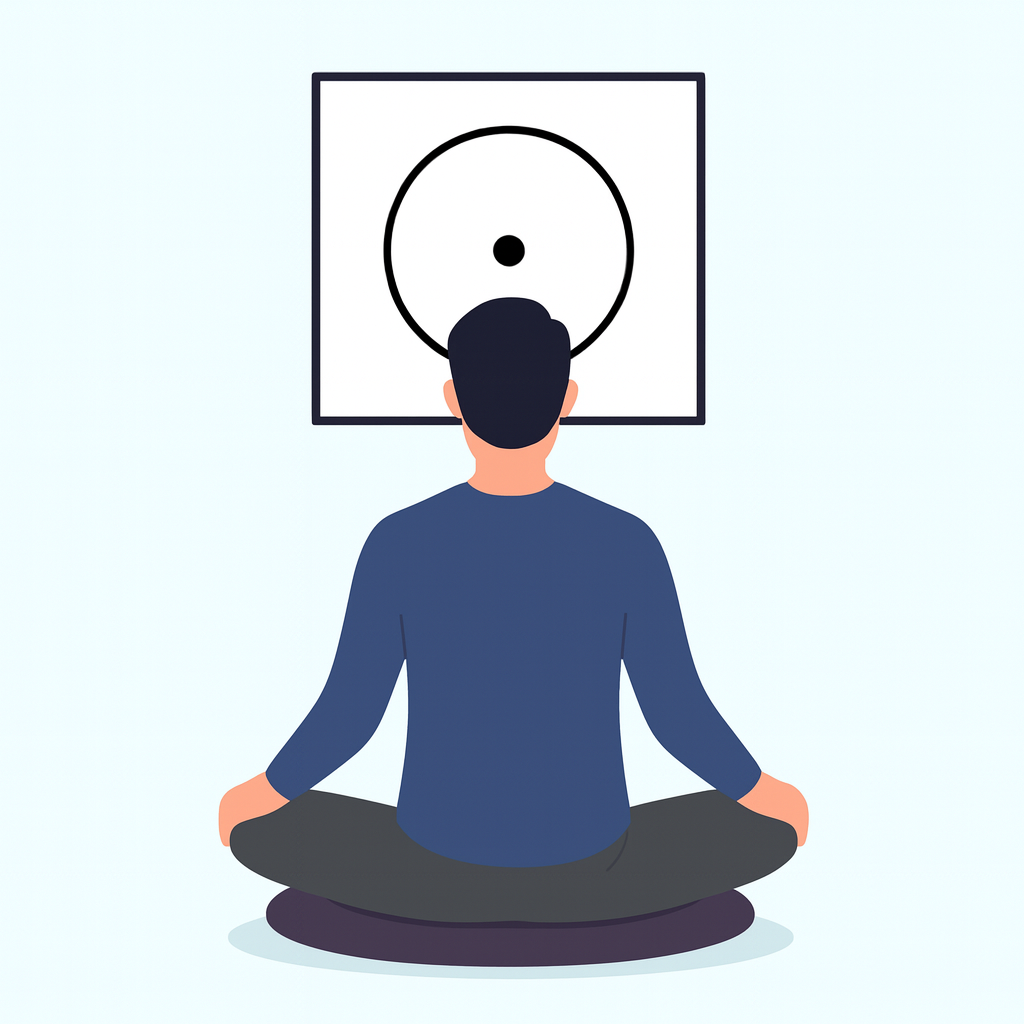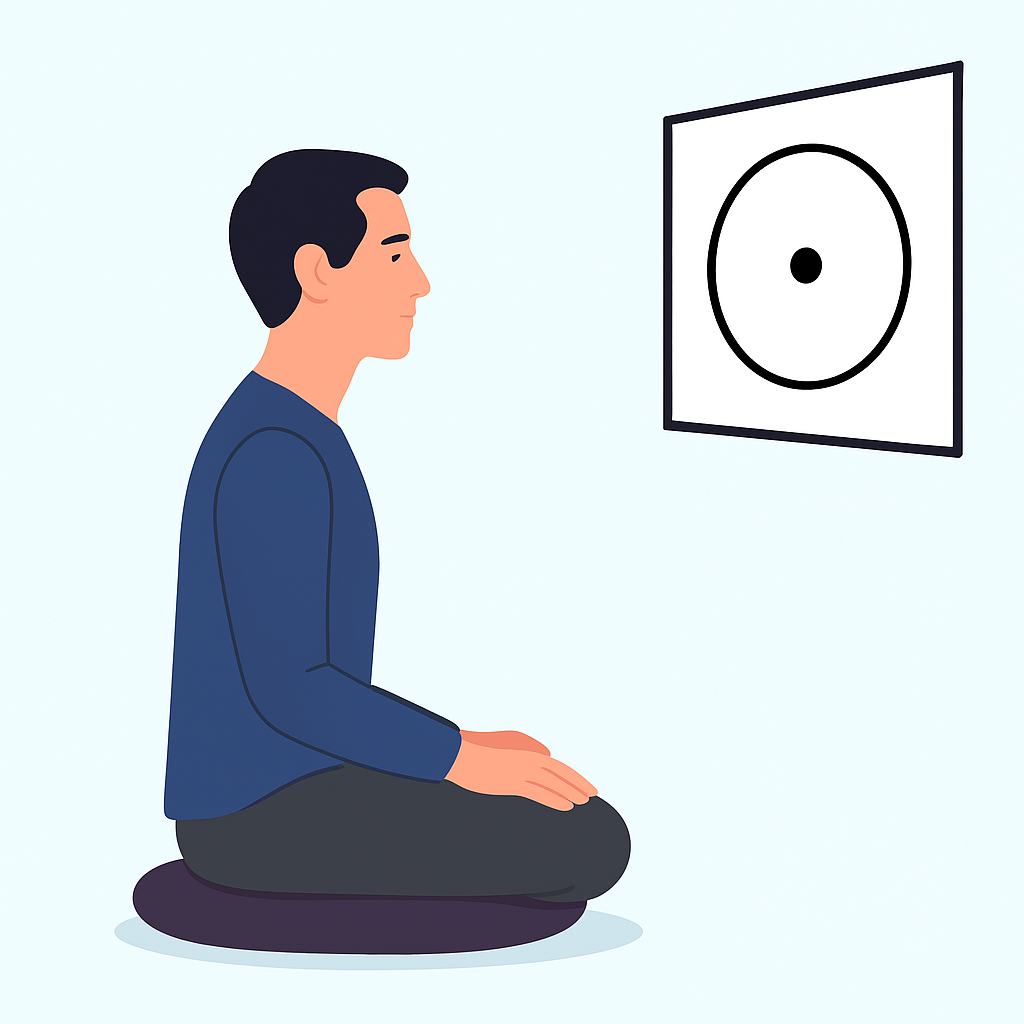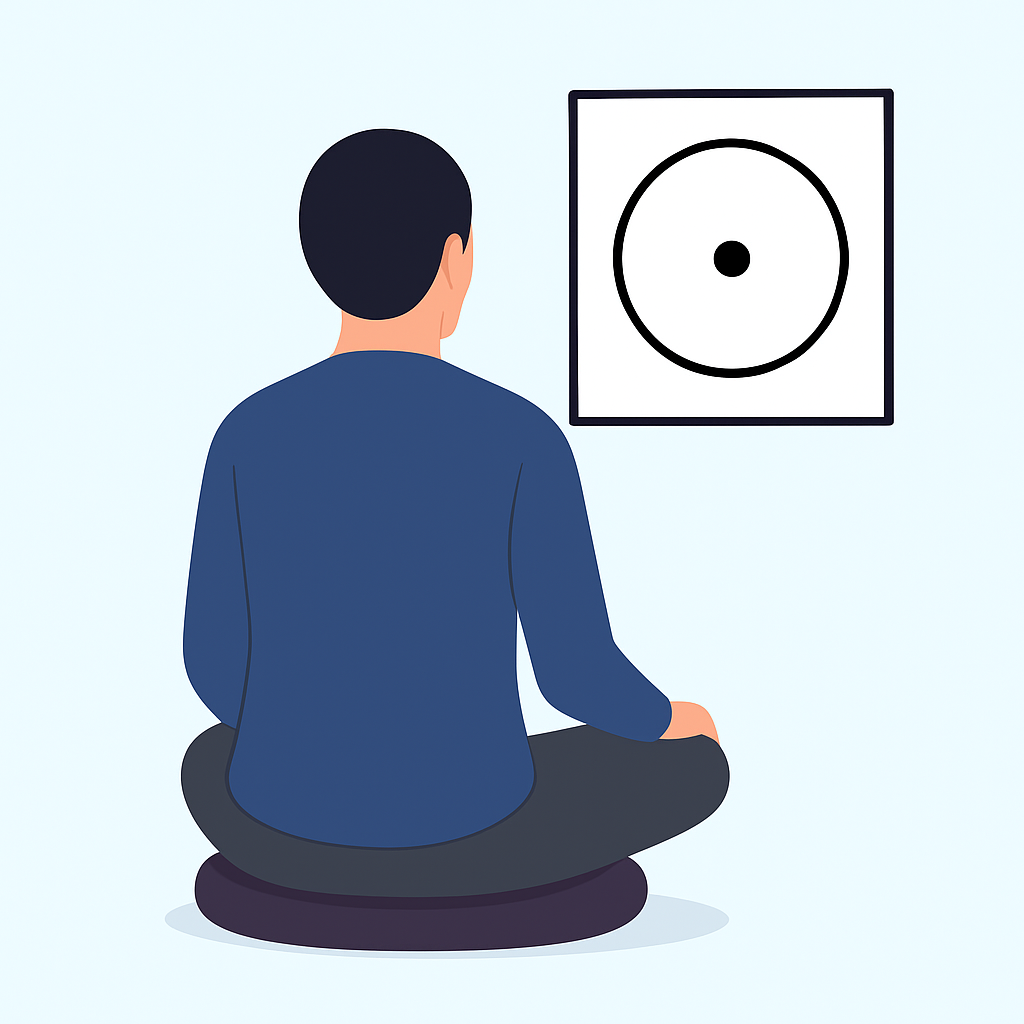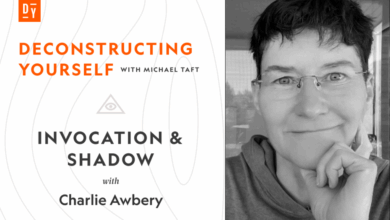Preparatory Mandala: A Practical Guide from Gururaj’s Satsang : Meditation Techniques
The Preparatory Mandala is a bridge between outer focus and inner movement. It combines gentle breathwork (prāṇāyāma), a scientifically designed visual (the mandala card with a charged metal ring), and felt inner sensing at a specific chakra. Below is a clear, practice-ready summary distilled from a satsang with Gururaj Ananda Yogi and senior teachers.

Why so much prāṇāyāma?
In this practice you begin with four sets of six rounds of prāṇāyāma—a lot more than usual. Here’s why:
- Prāṇa ≠ air. Prāṇa is the subtle energy associated with the breath.
- The breathwork saturates the subtle nervous system, especially the suṣumṇā (the fine central current linking the chakras).
- When you later link the mandala’s motion to a prescribed chakra, that saturated energy is integrated and directed there, helping the chakra open, enliven, and vibrate more finely (often described as opening “petal by petal”).
Takeaway: The breathwork charges the system; the mandala focuses that charge where it’s needed.
Feel it—don’t “force” it (Feeling vs. Imagining)
This is crucial:
- Imagining happens in the mind and easily becomes strained.
- Feeling (better said: sensing) is a direct inner experience—warmth, gentle motion, expansion, pressure, spaciousness.
If you can’t feel the movement at first, it’s fine to start with imagination, but turn it into sensing as soon as you can. Keep the mind loose and flexible.

“It’s at my forehead—how do I get it to the right chakra?”
Because it’s a visual technique, many people first perceive the mandala’s inner motion at the forehead (ājñā) when they close their eyes. That’s normal.
Solution: with gentle thought, move the felt motion to the prescribed chakra (heart, navel, etc.). You can guide it anywhere in the body; just bring it home to the chakra you were given.
Don’t concentrate; gaze
The printed mandala is static, but if you gaze (not stare), a subtle motion appears superimposed: spinning, pulsing, advancing/retreating, even flipping concave/convex. You might also see colors (pastel blues, pinks, golds). All of that is valid.
If you see nothing moving, you’re likely concentrating too hard. Soften. Let the mandala “work on” the mind. Over time, this external motion becomes easy to reproduce internally at the chakra.
What if I feel it in a different spot?
Chakras are interconnected and interdependent—not stacked “higher/lower,” but superimposed like dimensions. Working on the key chakra for your current growth can light up sensations elsewhere (e.g., working at svādhiṣṭhāna yet feeling the heart). Sometimes we treat one chakra to benefit another—just keep returning the felt motion to the chakra you were assigned.
Are blockages permanent?
What we call a “blockage” is often a narrowing—samskāras that restrict flow. When they’re cleared, they’re gone, unless we recreate similar patterns. Progress is not linear; opening in one area radiates support to others.

Sensations: what’s normal?
- Motion (clockwise or counter), pulsing, up/down shifts
- Heat/warmth, pressure, expansiveness
- Lightness/heaviness, 3D depth (doughnut/torus feel)
- Colors associated with chakric resonance
- Breath pause or sense of “not breathing” during stillness (often a sign of deep settling)
If an experience feels pleasant but unfamiliar, and a bit of fear pops up, relax and allow. Occasionally, people transcend (lose track of the sequence). A simple check: waking from sleep brings lethargy; emerging from transcendence feels fresh and energized.
The charged metal ring (and how to treat your mandala)
Each mandala carries a gently instilled spiritual charge in a metal ring, because metal retains this subtle energy well. It’s there to support your practice. A few best practices:
- Keep it sacred: Avoid displaying it publicly. Store it in a folder or closed case; hang it only in a private meditation space.
- Framing is okay: If you frame it, use non-reflective glass to prevent glare.
- Don’t overdo: The charge is helpful, but your system has a capacity. Just as a 250-watt bulb can’t take 380 watts, don’t try to “amp up” beyond your nervous system’s ability to integrate.
- Sleeping on it? You can experiment cautiously (not on top of the card!), e.g., stored under the bed—and stop if you wake with headaches or feel over-stimulated.
Personal items, personal attunement
The mandala design and charge are universal, but with regular use the card becomes attuned to you, like two identical cars that, after months, drive “uniquely” because of their drivers. It’s best each person uses their own mandala.
Privacy note: Never divulge your personal mantra to anyone. It is your “sound-signature.”
Scheduling with other practices
- A simple daily hour: 30 min mantra + 30 min tratak or mandala (alternate as suits you).
- If you have the time, you may practice three times a day, e.g.:
- Morning: Tratak
- Midday: Mandala
- Evening: Mantra
- Morning: Tratak
- Energy practices like gurushakti and chakra swirling can be lightly woven into the day.
Consistency matters more than duration. Let the quality of feeling guide you.
Quick Troubleshooting
- “No motion; just colors.” Great—colors are valid. Ease off effort; let subtle motion arise.
- “I only feel it at the forehead.” Gently guide it down to your prescribed chakra.
- “I got scared when it got very still/expansive.” That’s common. Soften, allow, continue.
- “Can I share my mandala/card?” Better to keep and use your own; it’s attuning to you.
- “Is one chakra higher than another?” No. They’re equally important and interpenetrating.
- “I ‘blacked out’ briefly.” If you return refreshed, you likely transcended; if groggy, you dozed—no problem, just continue.
- “Glass or plastic over the card?” Fine—prefer non-reflective glass to avoid visual noise.
A short practice script (prep version)
- Seat & soften (1–2 min): Sit comfortably. Set intention to feel rather than imagine.
- Prāṇāyāma (gradual build to 4×6 rounds): Even, unforced rhythm to saturate suṣumṇā.
- Mandala gaze (2–4 min): Gaze, don’t concentrate. Let abstract motion or colors arise.
- Close eyes; inner transfer (8–12 min): Feel the motion where it appears, then guide it to your prescribed chakra. Let it move as it wishes (spin, pulse, expand).
- Rest in stillness (2–5 min): Allow the system to integrate.
- Close (1 min): A simple Namaste—I bow to the Divinity within—to seal the practice.
(Timings are indicative; follow your given instructions.)
The spirit of the practice
Treat the preparatory mandala as sacred technology: clear form outside, living movement inside. Don’t push. Allow. Over days and weeks you’ll notice more fluid inner motion, spontaneous warmth or space, easier centering, and—most importantly—greater balance across your whole field.
Namaste — I bow to the Divinity within you.




